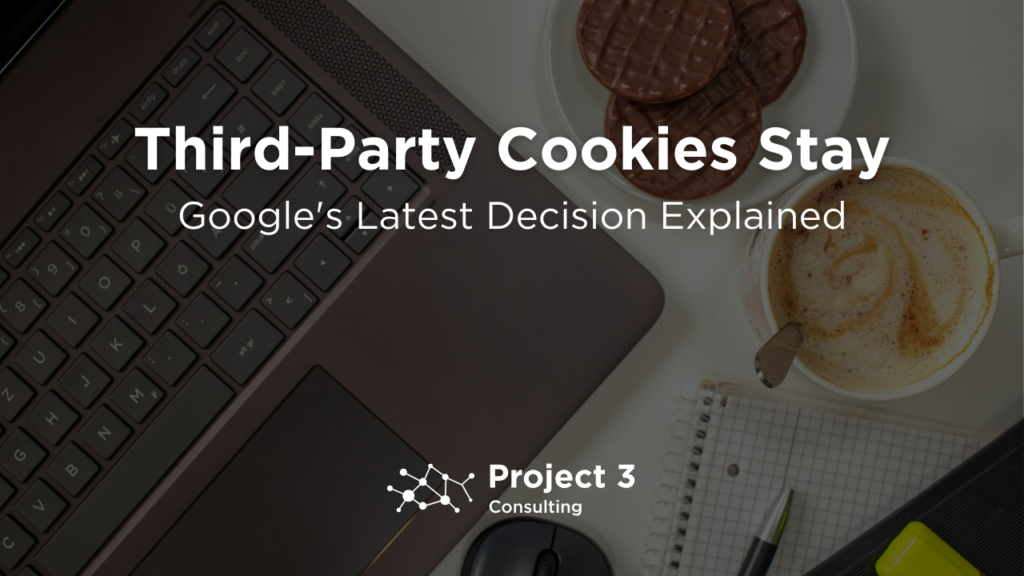
Now that the dust has settled, Google’s recent decision regarding third-party cookies in its Chrome browser has significant implications for the online marketing world. Initially, Google announced plans to phase out third-party cookies in January 2020, aiming for a 2022 deadline. However, this deadline was pushed back multiple times, with the most recent delay occurring in April 2024. Earlier this year, Google revealed that starting in January, third-party cookies would be blocked for 1% of all Chrome users. This is part of the reason why the decision in July to reverse this move came as such a shock.
The Controversy of Blocking Third-Party Cookies
Third-party cookies are used by domains other than the one a user is visiting to track activity across multiple websites. Initially, Chrome’s plan to block these cookies was perceived as a positive step towards improving user privacy. However, this decision sparked significant backlash from various organizations and regulatory bodies. Critics argued that removing third-party cookies could hinder publishers and marketers in effectively tracking user behavior, potentially stifling online marketing efforts. Additionally, concerns were raised by the Interactive Advertising Bureau about Google’s dual role in controlling both the browser market and privacy solutions, which some feared could lead to antitrust issues and limit competition.
The Privacy Sandbox Solution
Google’s proposed solution to replace third-party cookies is the Privacy Sandbox. This technology aims to aggregate user behavioral data and anonymize it while still providing enough information to understand conversions and user behavior. The Privacy Sandbox includes several key components:
- Differential Privacy: This system shares information about a dataset to reveal patterns without disclosing private information about individuals. It achieves this by adding random noise to the data, which obfuscates individual information while still allowing for meaningful insights into overall patterns and trends.
- K-Anonymity: K-anonymity is another method to protect individual privacy. It works by ensuring that each data point is indistinguishable from at least ‘k’ other data points. In practice, this means that data about any individual user is aggregated with data from at least ‘k’ other users, making it difficult to identify any one person based on their behavior.
- On-Device Processing: On-device processing refers to the practice of performing data analysis directly on users’ devices rather than sending raw data to external servers. This approach minimizes the amount of sensitive data that is transmitted over the internet and helps maintain user privacy.
The Privacy Sandbox represents Google’s effort to balance user privacy with the needs of marketers. However, some regulatory bodies have raised concerns about the competitive implications of this initiative. Given that Google controls both a leading web browser and a significant tracking solution, there are worries that this could lead to an unfair competitive advantage in the online advertising space, potentially stifling competition.
The Future of Third-Party Cookies and Online Tracking
Despite stepping back from its initial plan, Google continues to invest in the Privacy Sandbox. They plan to give visitors the choice between accepting third-party cookies or using the Privacy Sandbox. From a user perspective, this likely means that they will encounter a notification or popup in Chrome explaining their options. This possibility would provide users with more control and transparency over their data, allowing them to adjust their privacy settings anytime in Chrome’s settings menu.
This dual approach is also Google’s way of acknowledging the legislative challenges while still pushing forward with their long-term vision.
Several major companies, including Criteo, Adobe Advertising Cloud, and Quantcast, are already contributing to the Privacy Sandbox. This buy-in indicates the industry’s need for a robust alternative to third-party cookies. As users increasingly use ad blockers and manually disable cookies, the gap between those affected by third-party cookies and those who aren’t is narrowing.

Impact on Google Tag Manager When Users Opt Out of Third-Party Cookies
When users opt out of third-party cookies, Google Tag Manager (GTM) may face several challenges. Event tracking and conversion data become less comprehensive, impacting the accuracy of cross-site conversion tracking. Remarketing efforts are limited, as audience building based on cross-site behavior is restricted. Multi-touch attribution models also suffer, leading to less precise insights. GTM may need to rely on consent mode to adjust tag behavior based on user consent, requiring marketers to reconfigure tags and triggers to comply with user preferences. This shift increases reliance on first-party cookies and may necessitate server-side tagging to handle data processing on the server rather than the client-side.
Google’s Next Monopoly?
Google’s investment in the Privacy Sandbox highlights their strategy to maintain dominance in online tracking. While the AI space and technologies like ChatGPT garner significant attention, Google’s control over the browser market (65% market share worldwide) and their development of a tracking solution could secure their next major monopoly. By owning both the browser and the tracking technology, Google is positioning itself to remain a central player in the digital advertising ecosystem.
Conclusion
In conclusion, Google’s decision to maintain third-party cookies while developing the Privacy Sandbox reflects a strategic balance between addressing privacy concerns and responding to competitive pressures. By retaining third-party cookies temporarily, Google ensures continuity for marketers, while the Privacy Sandbox aims to introduce privacy-focused tracking solutions. As online tracking evolves, monitoring how these changes affect both marketers and consumers will be crucial. Marketers will need to adapt to new technologies, and consumers will experience a more nuanced approach to privacy. The success and adoption of the Privacy Sandbox will likely influence future regulatory decisions and shape the digital advertising landscape, making it important for all stakeholders to stay informed.




